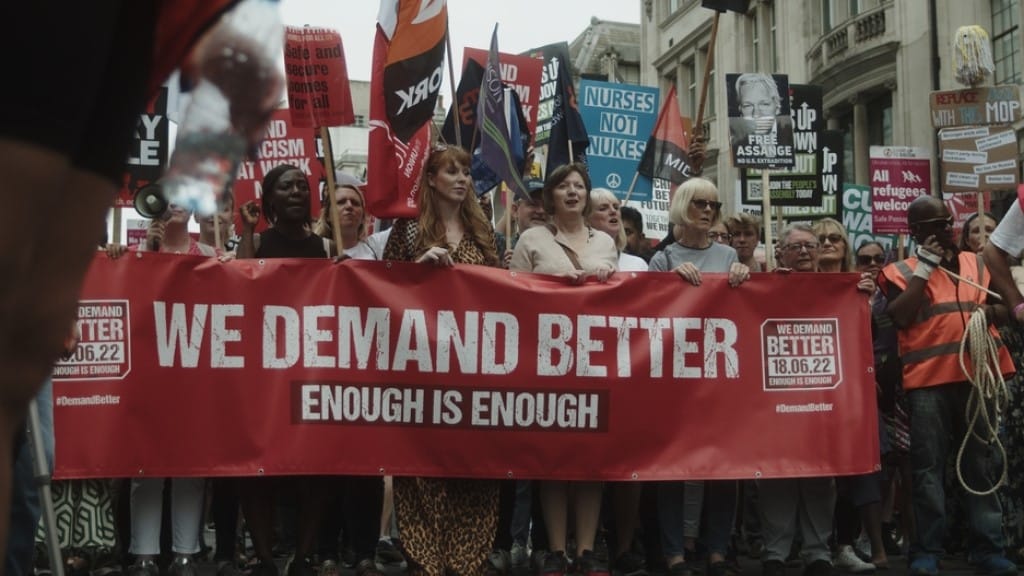Firefighters in Cambridgeshire Protest Over ‘Dangerous’ Crew Reductions
- November 30, 2023
- 10:11 am


Iain Hoey
Share this content
Yesterday, firefighters in Cambridgeshire voiced their strong opposition to the Cambridgeshire Fire and Rescue Service’s (CFRS) new policy of reducing crew numbers.
This protest, occurring at the official opening of the Huntingdon Fire Station and Service Training Centre, has drawn significant attention to the safety concerns associated with the policy change.
Protest at Huntingdon fire station opening
On 29th November, members of the Fire Brigades Union (FBU) took to the streets in protest against the CFRS’s trial policy, introduced in January 2023, which has reduced the number of on-call firefighters per crew to three.
This change has raised serious concerns among firefighters, with the FBU arguing that at least five firefighters are necessary to safely respond to life-threatening incidents.
Mark Harriss, FBU Cambridgeshire brigade secretary, emphasised that crews with only three members are inadequately equipped to enter burning buildings safely, thereby jeopardising both public and firefighter safety.
The impact of reduced crews
The reduction in crew numbers means a typical crew will comprise one driver, one officer overseeing operations, and one crew member.
This configuration, according to the FBU, is insufficient for effective rescue operations and safe firefighting.
For instance, in April, there was a flat fire where a crew of three couldn’t act until backup arrived 11 minutes later, highlighting the potential risks of delayed response in emergencies.
CFRS’s perspective on the policy
Despite the concerns, CFRS defends the policy, stating that allowing a crew of three to respond to all incidents can improve response times, particularly in rural areas.
This approach, they argue, allows for quicker deployment of resources to emergencies, though the service aspires to always have larger crews available.
Chief Fire Officer Chris Strickland has expressed CFRS’s commitment to improving response times while also striving to recruit more on-call firefighters.
Safety and response time concerns
However, the FBU remains adamant that the reduced crew levels compromise safety and do not effectively address Cambridgeshire’s firefighting needs.
Almost 90% of on-call firefighters in the union opposed the decision, underscoring the depth of concern within the ranks.
Furthermore, there is no concrete evidence suggesting that smaller crews enhance response times, especially since a crew of three must often wait for additional crews before tackling serious incidents.
Statistics and performance measures
The fire authority reported that the policy of smaller crews contributes to 1,000 additional hours of fire cover each month.
Performance measures for 2022/23 indicated that average response times in urban areas were within targets, though rural response times slightly exceeded the 12-minute target.
This policy, according to the FBU, places both the public and firefighters in increased danger, especially considering the need for sufficient crew members to safely conduct rescues and firefighting operations.
IFSJ Comment
The recent protests by Cambridgeshire firefighters highlight a critical dilemma in public safety: the balance between rapid response times and adequate crew strength for firefighting and rescue operations.
On one hand, CFRS’s policy aims to address the challenge of quicker responses in rural areas, acknowledging difficulties in recruiting sufficient on-call firefighters.
On the other, the firefighters’ protests and concerns raise valid points about the risks associated with under-crewed teams, especially in life-threatening situations.
This situation underscores the complexity of firefighting logistics and the vital importance of both speed and crew capacity in emergency responses.
The protest at the Huntingdon Fire Station opening serves as a focal point for broader issues in fire and rescue services, including resource allocation, recruitment challenges, and the evolving demands on emergency services.

